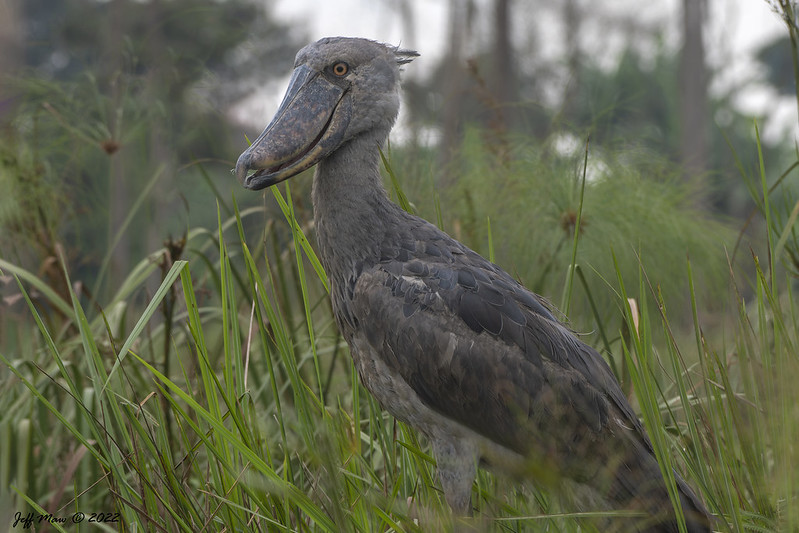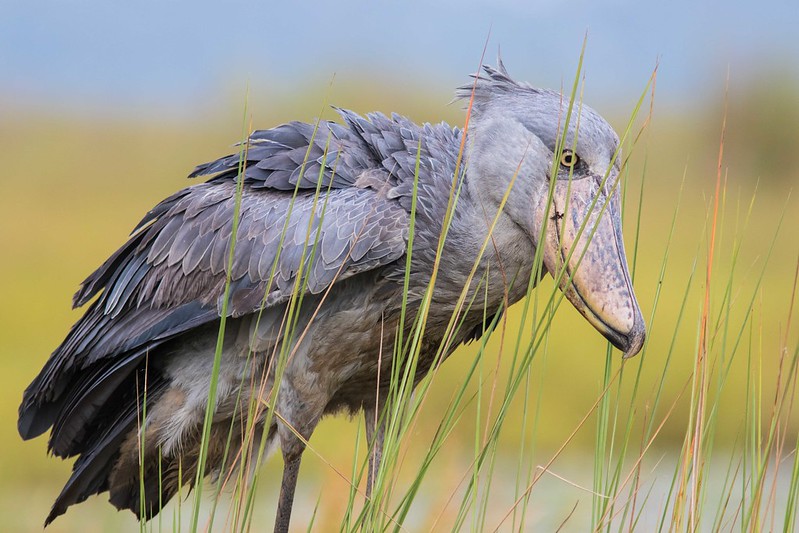Shoebill: where to see shoebill storks in Africa
The shoebill is a sizable avian species characterized by a unique bill morphology that sets it apart from all other birds. This is an African native species of bird that lives mostly in marshes. The shoebill bird bears a resemblance to a stork, but it is not synonymous with one. Scientists have faced perplexity in determining its classification for a considerable period of time. Currently, it is classified in the pelicaniforme order, although this is not always the case. Sometimes people refer to the shoebill as “whalehead,” but this term is less common than the shoebill itself.

What exactly is a shoebill?
The shoebill is a large bird, scientifically known as Balaeniceps rex, that is native to East Africa’s wetlands.Humans have acknowledged shoebills as prehistoric avian species since the era of ancient Egypt. For a long time, people mistakenly classified the shoebill as a stork, but they later reclassified it as a member of the pelican group.
People also consider it to resemble a hero in certain aspects. Shoebill birds lay eggs that resemble those of pelicans and also share some genetic material with them.The shoebill’s average size is often around 40 to 50 inches, although there may be some variation in size among individual birds, with some being slightly larger. Male shoebill birds typically have a weight of approximately 12 pounds, slightly above that of female shoebills, although the difference is not significant. Shoebill birds possess large bills shaped like spoons and exhibit gray plumage that turns brown as they age. Their substantial wingspan, specifically adapted for gliding, and relatively small necks set them apart from their stork and pelican counterparts. Despite their physical similarities to condors, shoebills do not share taxonomic relationships with this avian species.

Shoebills use their large and formidable bills to dispatch and consume their prey, which typically consists of fish. In addition, they occasionally consume rats, turtles, and smaller avian species, although such behavior is infrequent. Shoebills employ bill clattering as their primary means of communication, while they occasionally utilize mooing sounds as an alternative form of communication.
Are they an endangered species?
Shoebills are not now at risk of extinction, however. We classify the shoebill as a vulnerable species. Habitat degradation and hunting activities are gradually bringing the shoebill closer to endangered status, despite its current status.
Conservation measures are being implemented to prevent the shoebill from being classified as endangered.The scientific name of the shoebill is Balaeniceps rex. Balaeniceps rex is the shoebill’s taxonomic designation. The Balaeniceps genus belongs to the Balaenicipitidae family, which consists exclusively of the shoebill and the hamerkop.

Hamerkop is far smaller than a shoebill and has notable dissimilarities in appearance while belonging to the same family.The shoebill is taxonomically placed in the order Pelicaniformes due to its close relationship with pelicans, so it is occasionally called a shoebill pelican. Previously, the shoebill was erroneously classified as a member of the Ciconiformes order, which encompasses storks. The shoebill is often called the shoebill because its structure and shape are similar to those of a stork. Some biologists believe that the shoebill is taxonomically linked to herons, and hence it might be referred to as a shoebill crane.
Ezoic There is a plethora of knowledge yet to be acquired regarding shoebills, and the provided material has merely provided a superficial understanding. Gaining a comprehensive understanding of these exquisite shoebill birds is crucial, as it will contribute significantly to conservation endeavors and the prevention of their endangered status.
Shoebills pose little threat to humans, as there have been no documented instances of these birds causing harm or fatalities to humans, pets, or cattle. Despite their fearsome appearance and large bills, the bills of these creatures only pose a threat to fish and certain tiny animals. Preserving shoebill birds and their habitats is crucial to ensuring the continued prosperity of shoebills in the future.
Where to See Shoebill Storks
While you can see shoebill storks throughout Africa, Uganda is the best place to see these fascinating birds. Both permanent and migratory shoebill populations find refuge in the nation’s varied wetland environments, which are perfect for bird growth.
The Mabamba Bay wetlands on Lake Victoria’s shore, the Albert Delta, and the Victoria Nile in Murchison Falls National Park are the greatest locations in Uganda to get up close and personal with shoebill storks.
